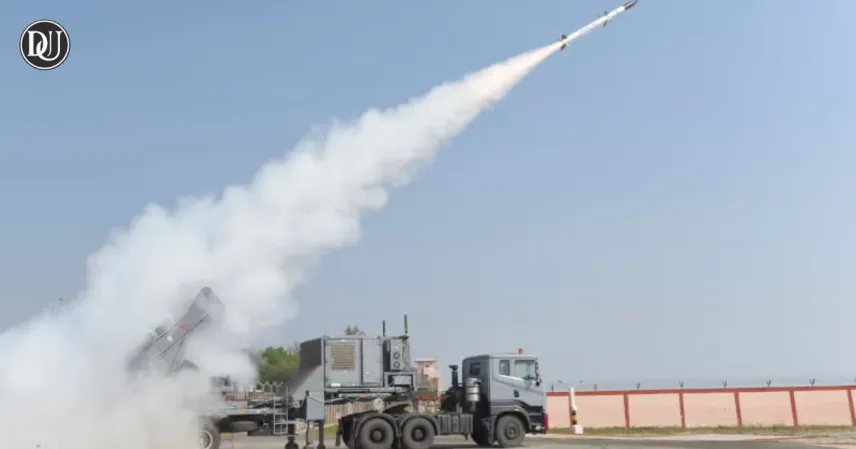In today’s world, threats don't always come with warnings. Missiles, drones, and enemy aircraft can appear in an instant, and the difference between chaos and calm often comes down to one thing — preparation. India has stepped up, building one of the most powerful air defense systems in the world. And recently, when danger came knocking at our borders, those defenses answered loud and clear.
S-400: The Powerhouse in the Skies
Let’s start with the S-400 — a name that’s become familiar to many. It’s not just a defense system; it’s a guardian. This advanced system can take down enemy aircraft and missiles from far away, giving us a critical edge.
Recently, in areas like Amritsar, when enemy missiles were heading our way, the S-400 was there. It did its job quietly but effectively, neutralizing threats before they could hurt our people. It’s reassuring to know something that powerful is watching over us.
Hostile ballistic missile intercepted mid-air by India’s deadly S-400 SAM system —Neutralized with precision.
— Meelogsin (@meelogsin) May 8, 2025
S400 is pure ❤️#Amritsar#IndiaPakistanWar pic.twitter.com/3OfdWwHeEt
Akash Missile: Proudly Made in India
Not every hero wears imported armor. The Akash missile system, developed right here at home, has proven its strength time and again. It might not have the longest range, but it's quick, mobile, and built for Indian conditions. It’s fast, smart, and ready to act when it matters most.
Think of Akash as the first responder — always alert, always ready to intercept danger in the skies. When things heat up near the border, it’s usually Akash stepping in to protect our skies.
SPYDER and Barak-8: Small but Mighty
Sometimes the threat is closer, smaller, or faster — like a drone or a low-flying missile. That’s where systems like SPYDER and Barak-8 come in. These agile systems work together with the others to ensure nothing slips through the cracks.
These aren’t just machines. They’re part of a broader effort to keep our cities, towns, and armed forces safe from surprise attacks. Every layer of this defense works like a team — and each has its unique role.
Layer by Layer: A Wall in the Sky
India doesn’t rely on just one defense system. It's a web — with each thread carefully placed to catch threats at different stages. Long-range, medium-range, short-range — they all connect. It’s like having a security guard, a CCTV, and a watchtower, all working together.
This is what gives us confidence. No single system is perfect, but together, they form a nearly impenetrable shield.
Ready, Always
With growing tensions around us, India has deployed its air defenses wisely. You’ll find them near key cities, on our borders, and guarding critical areas. And they’re not there to show off — they’re there to act. And act they do.
These are not just machines. They're silent protectors. Every time they intercept a threat, they save lives. And in a time where the skies can turn dangerous in moments, that protection means everything.
Final Thoughts: Peace Through Strength
Every citizen deserves to feel safe. And while we all hope for peace, being ready for conflict is what keeps us safe. India’s air defense network isn't just about technology — it’s about people. About mothers who can sleep peacefully, kids who can go to school safely, and communities that can live without fear.
These systems give us that peace of mind. And as technology improves and threats evolve, India continues to adapt, upgrade, and stay one step ahead.
Because in the face of any threat — we rise, we respond, and we protect.










